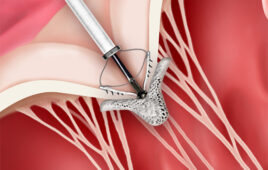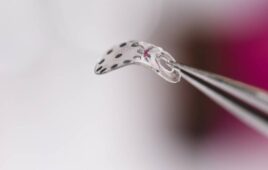 Medical technology has evolved to the point that surgeons can complete medical procedures through incisions less than an inch long. For practitioners, these less intrusive methods mean faster procedures and lower pre- and post-operation expenses. For patients, they accelerate recovery time and reduce surgical discomfort and the risk of serious side effects associated with invasive surgeries.
Medical technology has evolved to the point that surgeons can complete medical procedures through incisions less than an inch long. For practitioners, these less intrusive methods mean faster procedures and lower pre- and post-operation expenses. For patients, they accelerate recovery time and reduce surgical discomfort and the risk of serious side effects associated with invasive surgeries.
As a byproduct of the global shift toward minimally intrusive procedures, the endoscopic device market has soared. In 2011, the global endoscopic market was valued at $6.1 billion, and is projected to reach $9.7 billion by 2016. Reports predict a compound annual growth rate of 6.4 percent, with North America leading the endoscopic device charge in both technology adoption and usage. The major drivers of market growth consist of the aging baby boomer generation, increased awareness and acceptance of endoscopic techniques, a rise in endoscopic procedures, and advances in endoscopic technologies.
The proliferation of endoscopic procedures has surgeons demanding cutting-edge, minimally invasive technologies that push the limits of existing components and materials, forcing medical device manufacturers to measure up to a continually rising bar.
SCHOTT North America, a leading experts in fiber optic lighting, imaging components, and custom LED solutions, developed next-generation fiber optic image bundles and medical light guide cables to address industry demands. As internal surgical procedures grow more and more complicated, surgeons require greater visibility inside the body. They need crisp images and sharp lighting when performing microscopic surgeries, and continually seek stronger resolution and brighter lights to help them perform procedures.
To advance the available technology, SCHOTT produced flexible fiber optic image bundles that fit small-diameter endoscopes, such as ureteroscopes. These fibers measure between six and eight microns in dimension, and are fused together in groups of 6,700 to 18,000 to create a bundle up to one meter in length. The smaller-diameter fibers produce higher picture resolution while also boasting a rounder shape, allowing for a larger active area. The smaller bundles are less intrusive and improve patient comfort.
 Not only do surgeons request clearer picture quality when using endoscopes, but they also require stronger lighting to improve visibility inside the body. Customarily, doctors attach fiber optic light guide cables to surgical instruments, but older cables were often produced using carcinogens such as lead, arsenic, and antimony that harm the environment.
Not only do surgeons request clearer picture quality when using endoscopes, but they also require stronger lighting to improve visibility inside the body. Customarily, doctors attach fiber optic light guide cables to surgical instruments, but older cables were often produced using carcinogens such as lead, arsenic, and antimony that harm the environment.
SCHOTT tackled this problem by developing new medical light guide cables manufactured with eco-friendly PURAVIS glass optical fibers, which are lead-free and produced without the use of heavy metals. Compared to fibers made with lead, PURAVIS fibers provide five to eight percent higher white light transmission and improved autoclavability that maintains the light guide’s performance for up to > 300 500 autoclave cycles. Their longevity is also improved through chemical stability and low solarization. In addition, the fibers produce lower color shifts to better maintain the natural color of objects. At the moment, cables produced with these fibers are the only eco-friendly cables available in the U.S.
The rise in the endoscopic device market challenges manufacturers to produce the best minimally invasive technology possible. Markets demand more precise and eco-friendly devices, driving manufacturers to innovate production. In order to compete in the endoscopic market, manufacturers must not only meet, but exceed market expectations. These next-generation updates extend the vision of the medical industry and open discussion for more eco-friendly and patient-centered technologies in the future.




